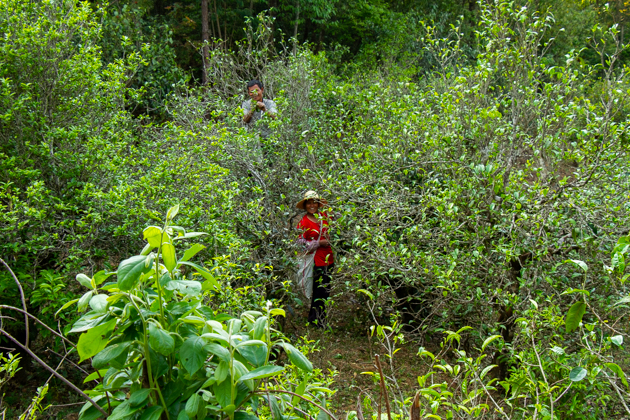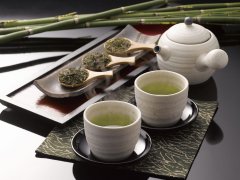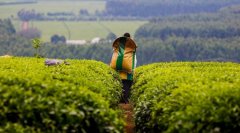How to distinguish the seven steps of tea quality identification what are the quality identification standards of tea
We all know the basic principle of the quality standard of bulk tea: do not buy bagged tea, make sure the tea is not dust. However, there are many standards for tea picking and production. Although these standards vary depending on the type and variety of tea, there are some standards that apply to most bulk tea.
Tea quality standard
The Common attribute of Tea Standard
Whether black tea, oolong tea, green tea, yellow tea, white tea or Pu'er tea, tea has similar common characteristics. This section will make special mention of tea from China and Taiwan, however, because the rules and styles of Japanese tea are significantly different.
Picked tea leaves
The picked tea should be intact, intact and without skin damage (no damage). This shows that the tea is picked carefully, not picked quickly or by machine.
Uniformity of tea
For high-quality tea, most of the shape and size of tea should be the same. This is also determined by the picking criteria for specific types of tea. For example, many (but not all) high-quality teas contain only the original buds and tea. If there is a mixture of large teas and small, young teas, it may indicate that picking standards are not being followed. Sometimes, older and larger teas are mixed together to produce higher quantities of tea, but the price of tea that people buy is still high.
Variety
According to the different varieties of tea, the variety can actually explain a lot about tea. Although some teas of the same category can be produced with different varieties, others must adhere to one variety in order to be considered real tea. In our recent blog, we talked about "Dahongpao". Today, Dahongpao has a wide variety and good quality. However, some farmers still raise the price of their DHP, saying it is authentic Dahongpao oolong tea, produced from only one variety (Qidan). When buying tea, it may be important to ask about the variety.
The season of harvest
Each kind of tea has a specific harvest time and should be adhered to. Many top teas are harvested in early spring, just after the last frost. It usually takes only a week, and the ideal tea harvest will not be overripe due to sunlight and rising temperatures. Tea harvested in late spring or even summer usually has larger leaves. According to the kind of tea you buy, it is important to pay attention to the harvest date. It should also be noted that these harvest dates vary from location to location. Tea grown in northern China or at a higher altitude will naturally have a later harvest date. For more information, please check out our article "what is the harvest season for tea?"

The location of the tea farm
A lot of tea is related to the place of origin. A good example is Pu'er. Only Pu'er produced in Yunnan, China can be regarded as real Pu'er. Another example is salt tea, which can only be produced in Wuyi Mountain. There may not be a real version of this tea elsewhere. The same applies to "mountain tea", which may not grow at high altitudes at all. A kind of tea can be considered mountain tea only at an altitude of at least 3300 feet (1000 meters) above sea level. Read more: how altitude affects the quality of tea
The concept and practice of growth
This is another key point when talking about high-quality specialty tea. Is it pesticide use? Are the leaves picked by hand? Is the tea garden sustainable? How have tea farmers been treated? This information may be harder to obtain, but it is worth the risk of asking the appropriate questions.
Packing
We believe that most tea merchants adhere to correct storage and packaging practices. However, this is not always the case. Especially when it comes to fermented Pu'er tea, it can be obvious when the tea is not properly stored. Read more. Some basic rules are: tea cannot be sold in plastic bags, transparent self-sealed bags or glass bottles. Tea leaves are not suitable for exposure to light. They may lose energy, taste and aroma more quickly. Cans or opaque bags with lining are good choices. In addition, make sure there is no aluminum in the tea, because aluminum may be harmful to our health and the taste of the tea.
The quality of Chinese tea
These are the things we can see before we taste the tea ourselves. If you already know the above points, it's best not to try. However, if these qualities look good, then you can start tasting tea. To learn about the taste and aroma of tea, please click here.
These tea standards are sometimes difficult to grasp. In China, there are at least four systems-national, provincial, local and individual (proposed by specific tea merchants themselves to maintain the standard quality of their tea). Unfortunately, without a recognized system (like coffee), it is difficult to track and control tea farmers.
Important Notice :
前街咖啡 FrontStreet Coffee has moved to new addredd:
FrontStreet Coffee Address: 315,Donghua East Road,GuangZhou
Tel:020 38364473
- Prev

Which kind of black tea is the top black tea on the list of the top ten famous tea in China? how can Keemun Black Tea make a good drink?
Before we go into the details, it is important that we know that tea did not appear until the 13th century. Before that, tea was made in a completely different way. It is brewed as a medicine. Even the word brewing is strong. More precisely, the tea is ground into powder and then stirred in a way similar to modern matcha. Usually, this is associated with other herbs and incense
- Next

What are the main producing areas of Kenyan tea? What are the advantages and characteristics of Kenyan tea?
Kenyan tea comes from natural high elevations and does not use pesticides. It grows near the equator, so it gets plenty of sunlight throughout the year and carries out natural photosynthesis, which helps to produce natural high-quality tea. Tea is planted in areas 1500-2700 meters above sea level, with annual precipitation of 1200-1400 mm, distributed throughout the year. This makes the supply of Kenyan tea four times a year.
Related
- Beginners will see the "Coffee pull flower" guide!
- What is the difference between ice blog purified milk and ordinary milk coffee?
- Why is the Philippines the largest producer of crops in Liberia?
- For coffee extraction, should the fine powder be retained?
- How does extracted espresso fill pressed powder? How much strength does it take to press the powder?
- How to make jasmine cold extract coffee? Is the jasmine + latte good?
- Will this little toy really make the coffee taste better? How does Lily Drip affect coffee extraction?
- Will the action of slapping the filter cup also affect coffee extraction?
- What's the difference between powder-to-water ratio and powder-to-liquid ratio?
- What is the Ethiopian local species? What does it have to do with Heirloom native species?

